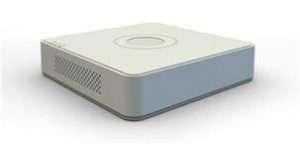A DVR or Digital Video Recorder is often used in a security system. It consists of security cameras that capture and send videos and sometimes audio to a connected DVR machine. A DVR records videos digitally which gives better image quality and storage capabilities than compared to the traditional analog video monitoring systems. It is easy to upgrade from the traditional analog security system to the digital one. All one needs to do is disconnect the VCR and plug in the cameras to the new DVR box and connect the monitor to the DVR.

The DVR processes and records the video in the Hard Drive which allows for storing the recordings for several days without having to worry about the maintenance of the system. Once the storage is exhausted, the new video can be recorded on top of the oldest files if such capabilities are present or the DVR sends an alert sound. The DVR comes with their own operating system which is often Linux based and application software in the form of firmware. Retrieval of data from the traditional system is difficult and time taking as one has to fast forward, rewind and play to go to the portion of interest. DVR videos are in the form of files and often date and time stamped, so it is easy to navigate to the desired portion.
The hardware and software features of DVR vary from manufacturer to manufacturer. Some of these features are discussed below.
The DVRs are designed for rack mounting. They may have single or multiple input channels which may be analog or digital using coaxial cable, twisted pair or optical fibre cable. They can be 1, 2, 4, 8, 16, 32 channel configuration where each camera is connected to a channel. More than 32 cameras are often configured using bussing individual DVRs together. A computer may be used as a DVR using a DVR card. They contain front panel switches and indicators that allow controlling of the various features of the DVR. A connection to external Pan, Tilt, Zoom drives that control the field of view of PTZ cameras.
The software feature includes controlling the image capture rates on all inputs or input by input basis. The image resolution can also be selected by the user through the DVR and can be configured on all inputs or input by input basis. The video compression methods can be selected which determines the quality and the volume of storage required for recording and viewing the camera footage. Some DVR systems are capable of motion detection which triggers changes in internal features that influences the output from the device.
One thing has to be kept in mind that DVRs are not capable of networking. Unlike Network Video Recorder For IP Camera, they cannot be connected to the internet or other networks which is why they work in a closed circuit system only. To get images captured through a network or internet one has to use an NVR. An NVR is capable of uploading the video captured directly to the cloud and so even if it is damaged or stolen, the footage remains and can be retrieved from anywhere.
